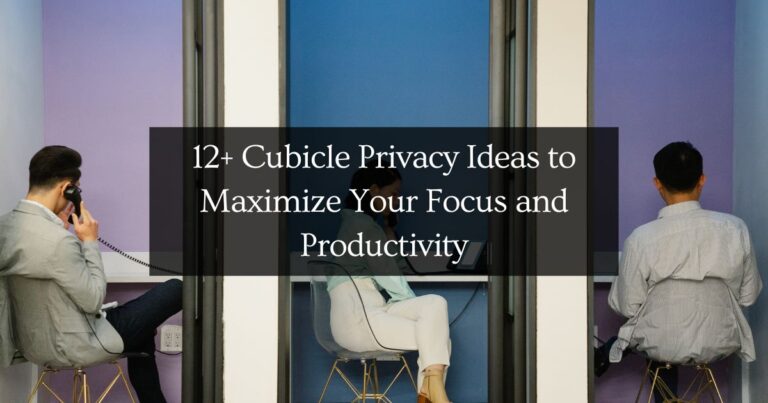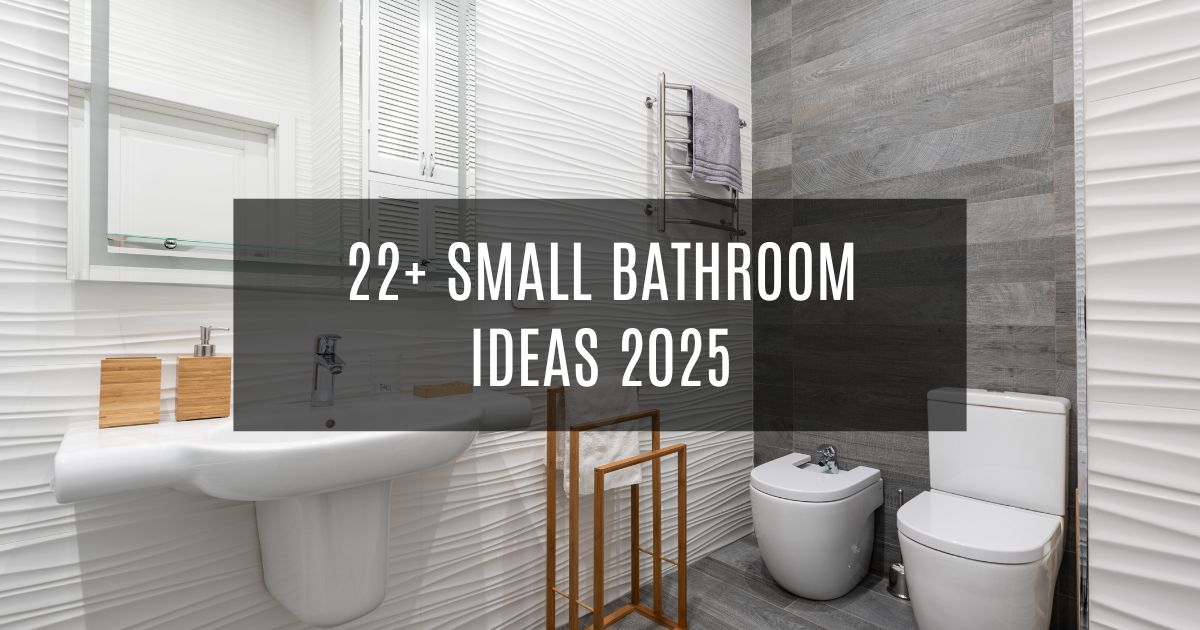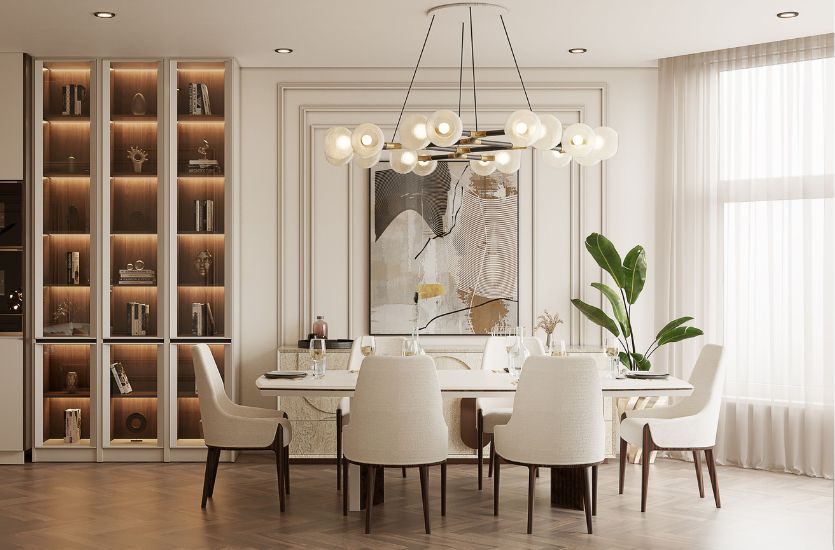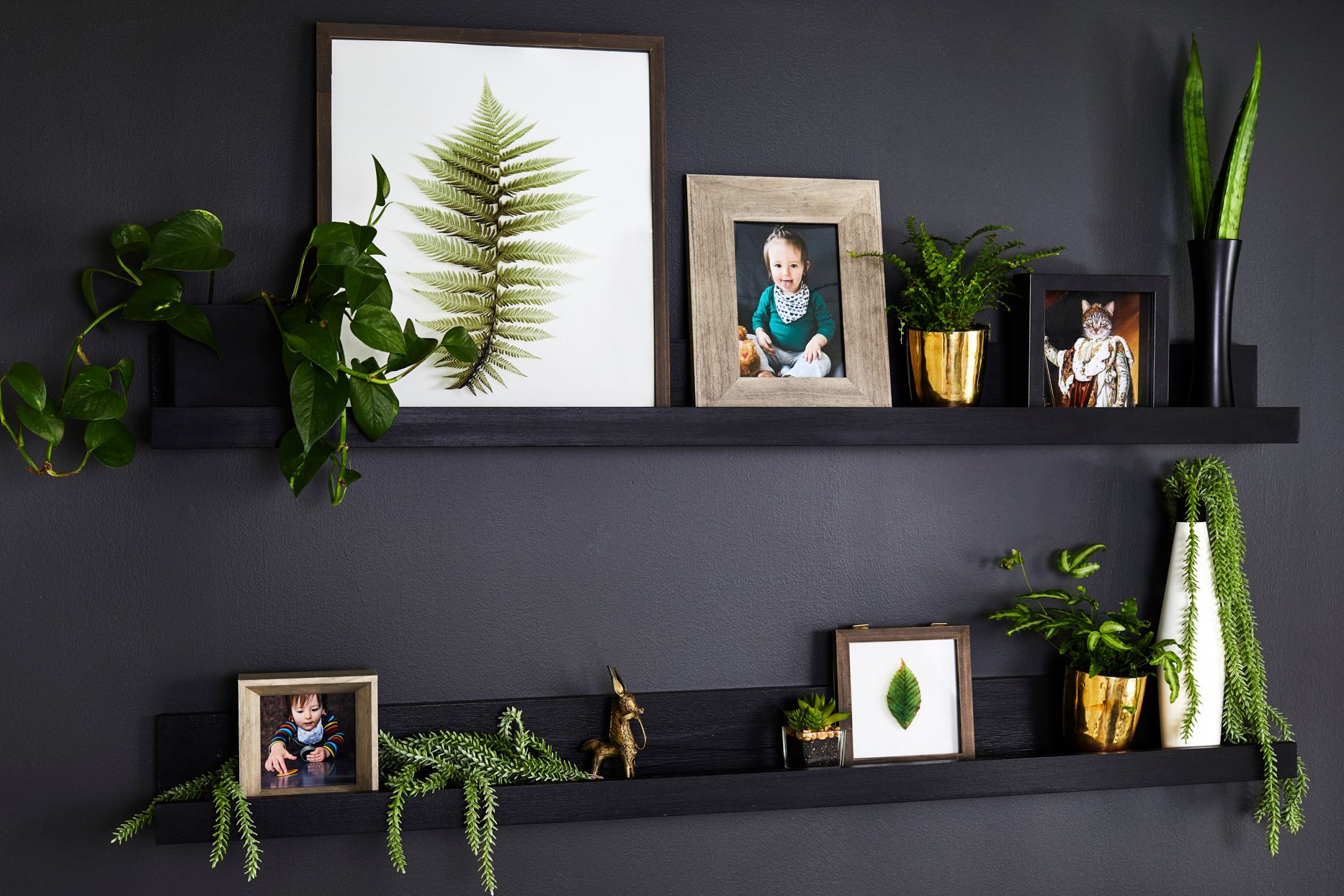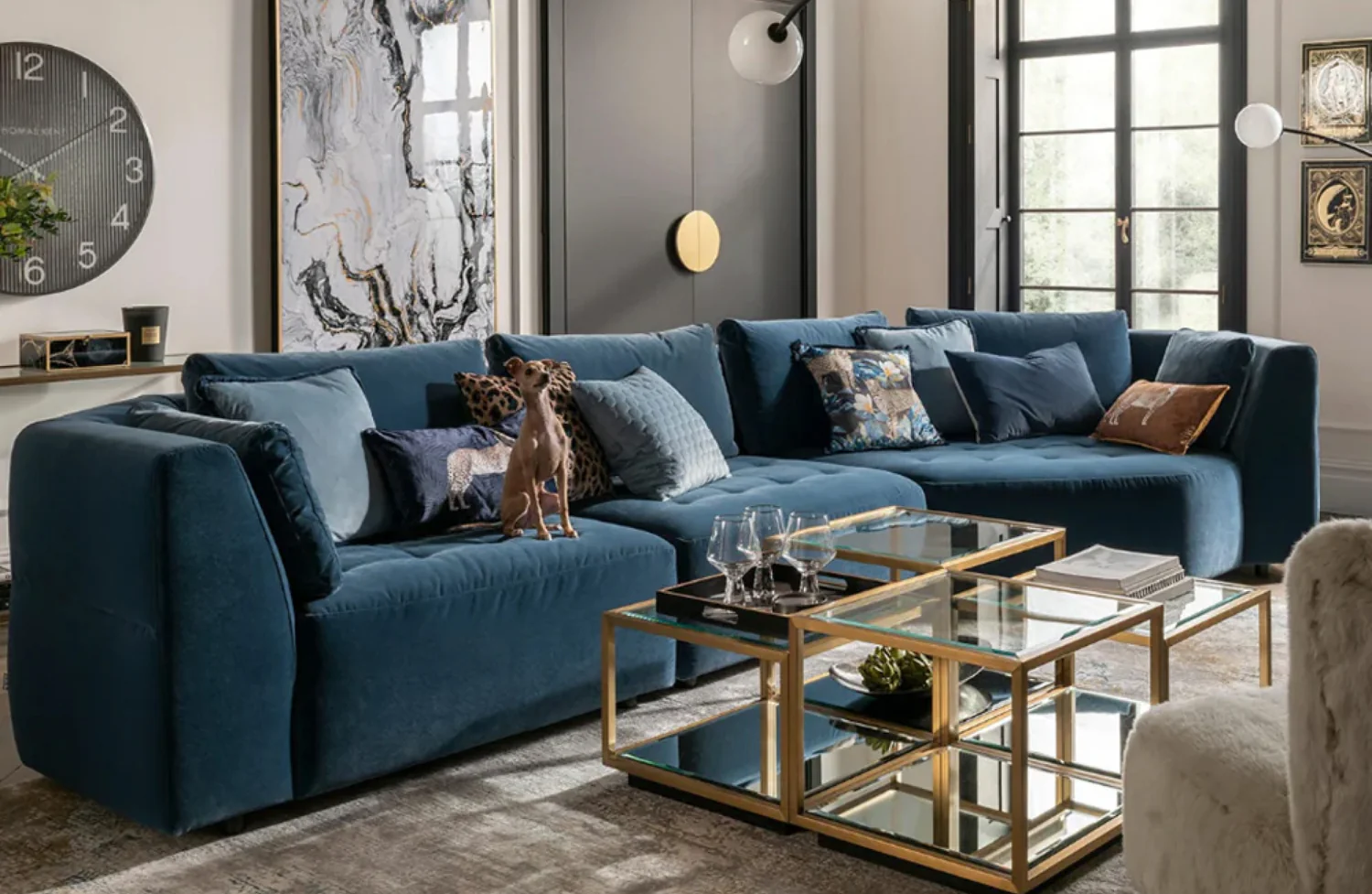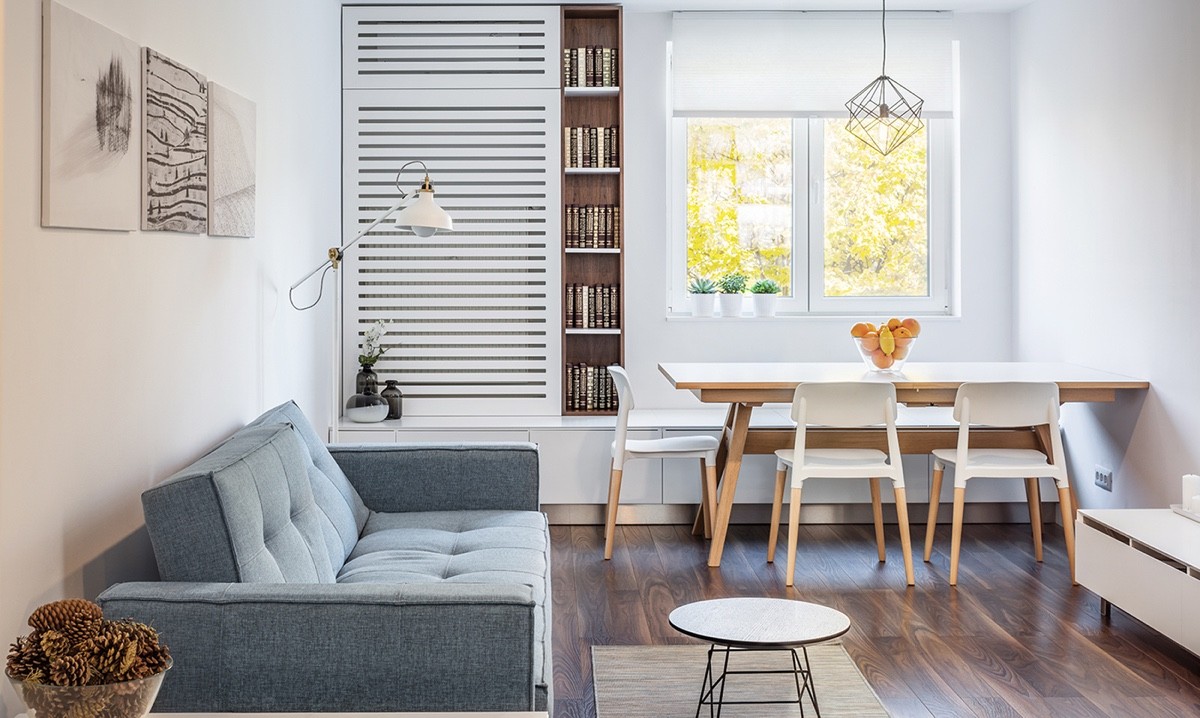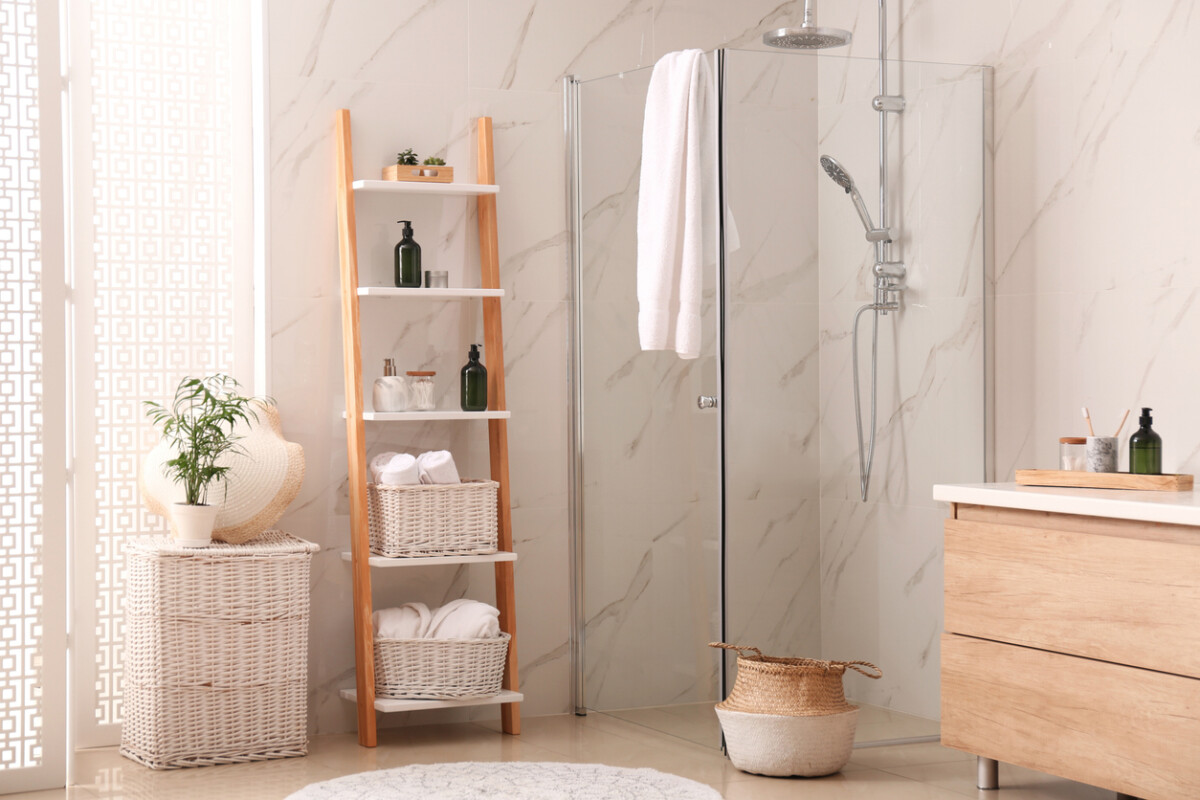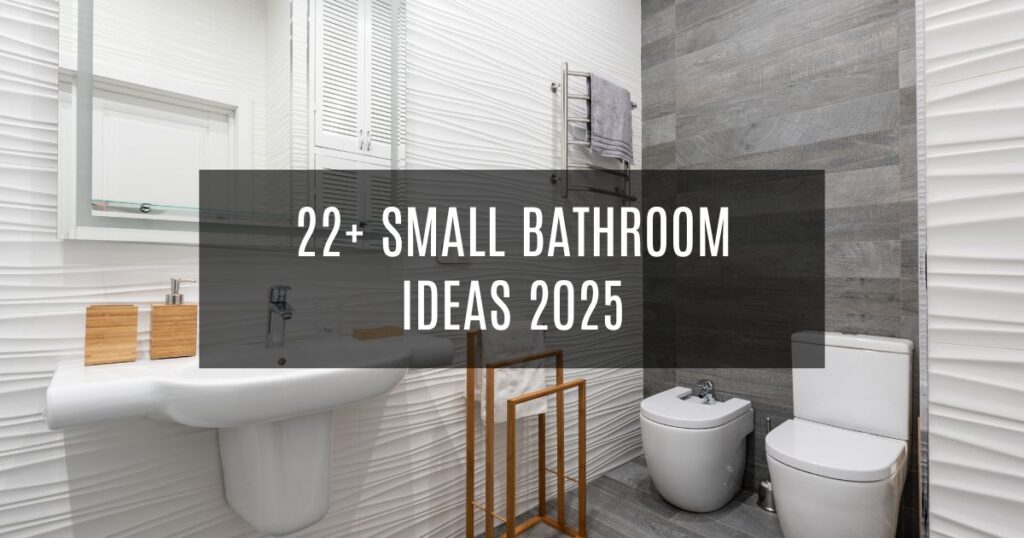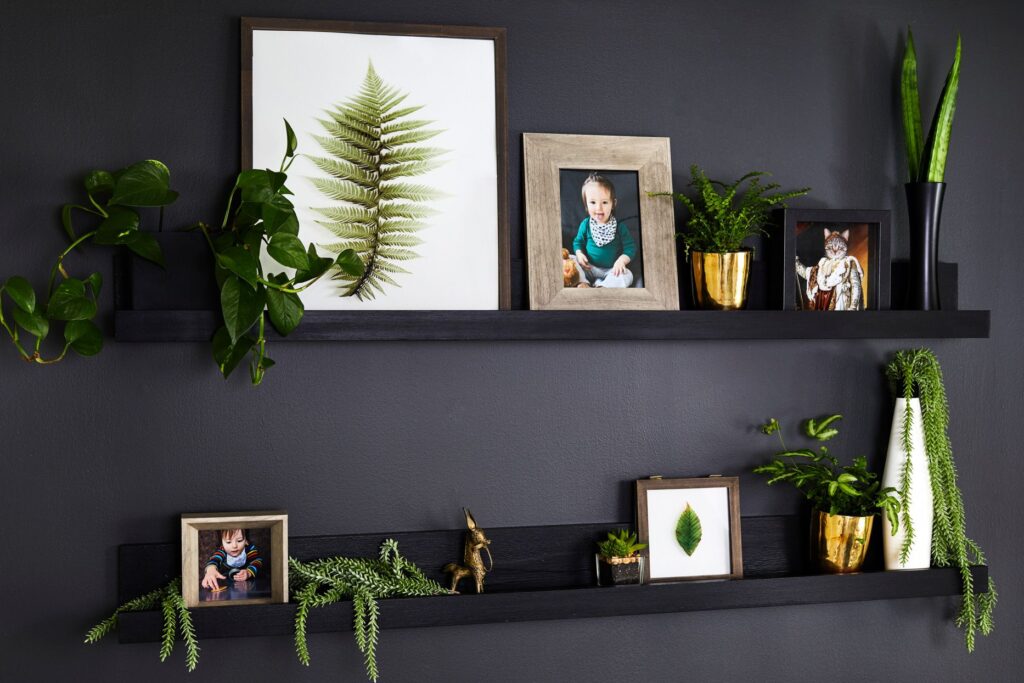You spend a significant portion of your day in a cubicle, striving to be productive and focused. Yet, despite your best intentions, you might find your concentration slipping away because of a lack of privacy.
Conversations echo from nearby workstations, people walk by your desk, and your personal space feels perpetually on display.
If any of this sounds familiar, then you know firsthand how crucial it is to carve out a private oasis within your office environment. After all, when your space feels exposed and distractions are everywhere, stress levels can skyrocket and productivity can plummet.
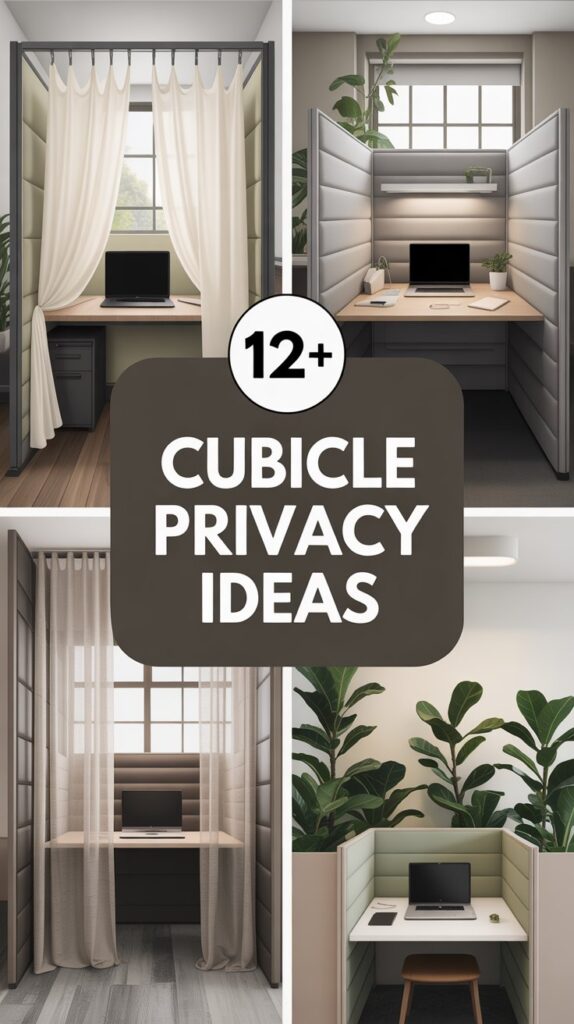
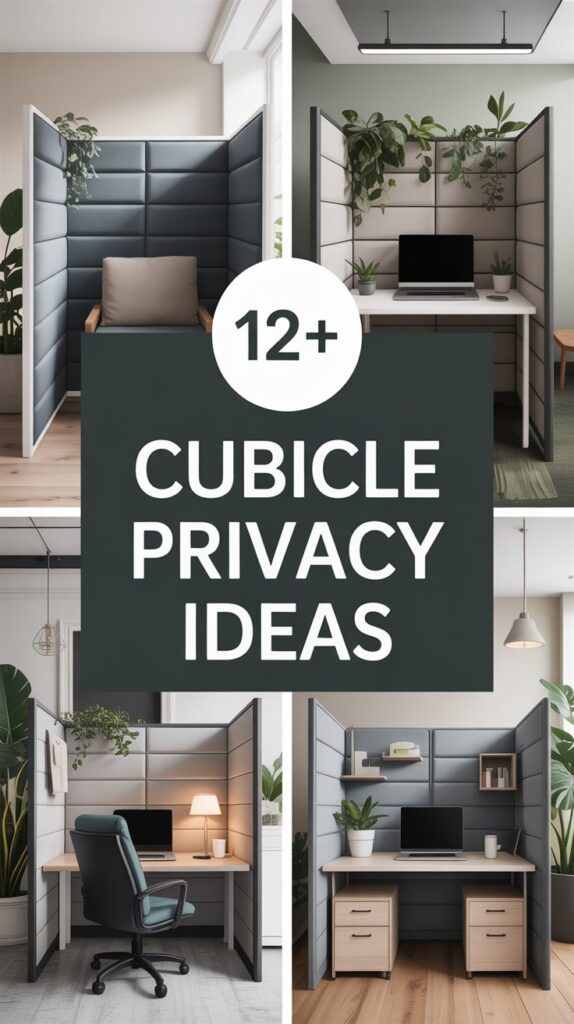
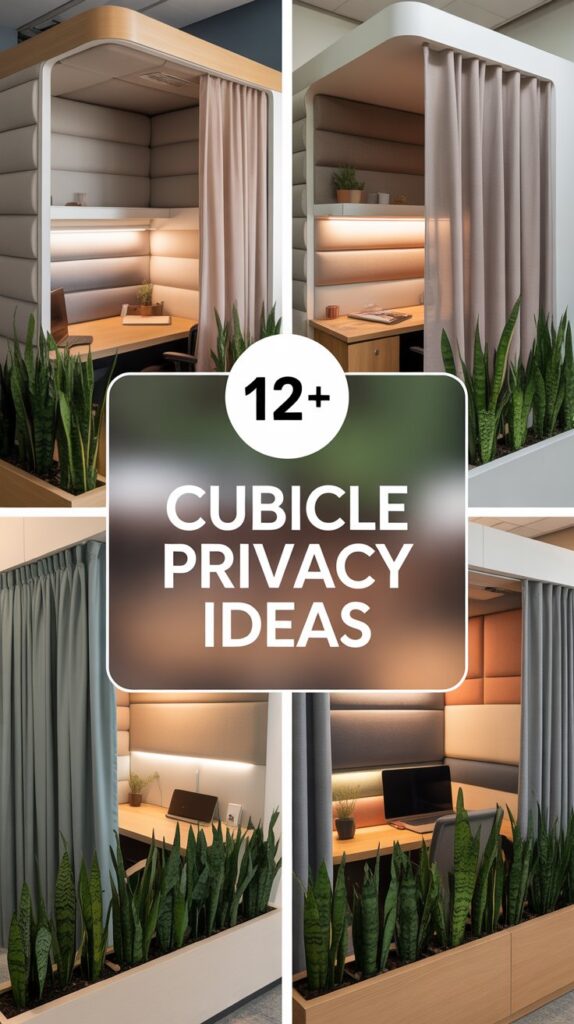
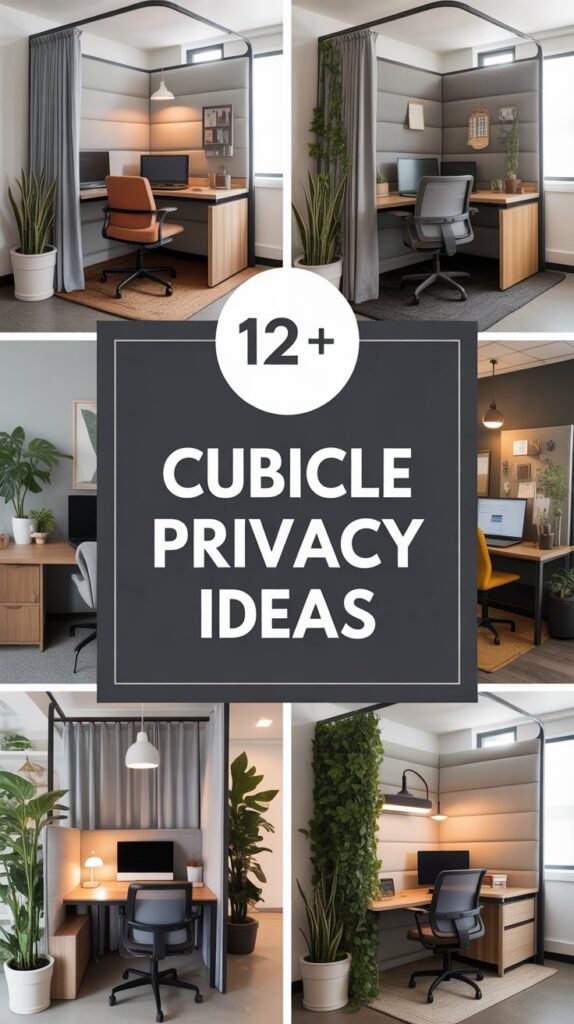
You deserve a workspace that supports your well-being, where you can work without constant interruptions or worrying eyes.
Privacy doesn’t just help you focus on your tasks—it can also contribute to better morale and a sense of personal control over your environment.
Creating or enhancing privacy in a cubicle may seem challenging, but there are several practical, budget-friendly ways to accomplish this. With the right tweaks and adjustments, you’ll be amazed at how much more comfortable and motivated you can feel.
In this article, you’ll discover more than a dozen creative ideas for increasing privacy in your cubicle. Each suggestion comes with detailed explanations on how to implement it, tips for success, and considerations to keep in mind. Whether you opt for simple desk accessories or larger, more transformative solutions, these strategies will help you design a quiet, personalized, and distraction-free workspace.
By the time you finish reading, you’ll have a wealth of options to create the sense of seclusion you crave—even in the busiest office setting.
So, let’s dive into these 12+ cubicle privacy ideas. You’ll explore everything from noise-reducing products and visual barriers to the power of scheduling and decluttering.
By experimenting with one or several of these ideas, you’ll likely find a combination that perfectly suits your work style and office layout, helping you transform your cubicle into a haven of productivity and serenity.
Table of Contents
- 12+ Cubicle Privacy Ideas
- 1. Install Desk Dividers or Privacy Panels
- 2. Use Plants as Natural Barriers
- 3. Reposition Your Computer Monitor
- 4. Incorporate Noise-Cancelling Headphones
- 5. Set Up a White Noise Machine
- 6. Add Sound-Absorbing Materials
- 7. Hang a Small Curtain or Tapestry
- 8. Employ “Do Not Disturb” Indicators
- 9. Strategically Rearrange Your Furniture
- 10. Declutter and Organize
- 11. Try Desktop Shelves and Organizers
- 12. Invest in a Privacy Screen Filter
- 13. Request a Flexible Work Schedule
- 14. Utilize Office Etiquette and Communication
- Conclusion
- FAQs
12+ Cubicle Privacy Ideas
Below, you’ll find a comprehensive list of creative solutions to help boost your privacy in a cubicle setting. Whether you’re looking for noise reduction, visual barriers, or a more organized space, these suggestions will cater to a variety of needs.
1. Install Desk Dividers or Privacy Panels
Desk dividers and privacy panels are a straightforward option to give you an immediate sense of separation from your surroundings. These items come in various materials—such as fabric, acrylic, or even sound-absorbing foam—and are typically designed to clamp onto your existing desk or cubicle walls. By placing them strategically, you can block visual distractions and reduce peripheral interruptions from busy corridors or nearby coworkers.
How to implement:
- Measure your cubicle space and desk dimensions to find panels that fit precisely.
- Look for panels with easy-to-install clamps or stands to ensure minimal damage to office furniture.
- If noise is your top concern, opt for panels specifically designed for sound absorption.
Key benefits:
- Creates a dedicated boundary for your personal workspace.
- Offers a quick, relatively low-cost approach to enhance privacy.
- Helps you focus on your computer screen or documents without getting distracted by movement around you.
2. Use Plants as Natural Barriers
Bringing greenery into your cubicle not only adds a calming, aesthetic touch but can also serve as a natural privacy solution. Tall plants or a cluster of shorter ones can form a living partition between you and the rest of the office. They also help filter out noise to a small degree and improve air quality, making the overall workspace more pleasant.
How to implement:
- Choose low-maintenance plants like snake plants, pothos, or ZZ plants that thrive in indoor office environments.
- Position them at the edges of your cubicle or near the entry point where visibility from outside is highest.
- Consider using a vertical plant stand or hanging planters to maximize space if your desk area is limited.
Key benefits:
- Adds a soft visual and acoustic barrier.
- Promotes a more relaxing atmosphere, helping to reduce stress.
- Improves air quality, offering health benefits alongside privacy.
3. Reposition Your Computer Monitor
An often-overlooked strategy for greater privacy is simply shifting your computer monitor. If your screen is easily visible to people walking by, you’re more likely to feel “on display,” especially if you handle sensitive documents or personal tasks. While it may not silence ambient noise, repositioning your monitor provides immediate relief from prying eyes.
How to implement:
- Experiment with different angles and distances, ensuring that your screen doesn’t face high-traffic areas.
- Use a monitor arm mount if your office furniture permits, so you can easily adjust angles for comfort and privacy.
- If your budget allows, invest in a privacy screen filter that narrows the viewing angle, preventing others from reading your screen at a glance.
Key benefits:
- Enhances digital privacy without requiring major alterations to your workspace.
- Reduces the anxiety that comes from feeling like coworkers can monitor your screen activity.
- Improves ergonomics by letting you align the monitor to your ideal height and angle.
4. Incorporate Noise-Cancelling Headphones
Noise-cancelling headphones are a popular and effective way to drown out the hustle and bustle of an open office. Even if you can’t completely block out visual distractions, reducing auditory interruptions can significantly boost your ability to focus. Plus, headphones often serve as a social cue that you’re busy, deterring coworkers from casually stopping by to chat.
How to implement:
- Invest in high-quality noise-cancelling headphones that fit comfortably, especially if you plan to wear them for extended periods.
- Listen to instrumental music or ambient sounds to maintain focus without disruptive lyrics.
- Communicate with your team or supervisor if you plan to use headphones frequently, ensuring that you remain accessible when necessary.
Key benefits:
- Filters out conversations, office equipment noise, and other distracting sounds.
- Helps you stay in a focused “zone” for prolonged periods.
- Signals to others that you prefer minimal interruptions.
5. Set Up a White Noise Machine
If wearing headphones for hours on end isn’t your style, a white noise machine can be an excellent alternative. These devices create a consistent background sound—like rushing water, rainfall, or gentle static—that masks office chatter and the hum of electronics. White noise can be especially beneficial if you thrive in a constant level of soft sound rather than complete silence or random bursts of noise.
How to implement:
- Place a small white noise machine near your desk but not so close that it’s distracting.
- Experiment with different sound profiles (e.g., nature sounds, fan noise, or traditional white noise) to find the one that best aids your concentration.
- Keep the volume at a moderate level to avoid disturbing nearby colleagues.
Key benefits:
- Smooths out sudden spikes in noise, providing a more constant auditory environment.
- Helps reduce stress by limiting the abruptness of distracting sounds.
- Offers a shared solution if multiple coworkers wish to mask ambient noise without wearing headphones.
6. Add Sound-Absorbing Materials
Beyond white noise machines, you can also incorporate materials designed to dampen or absorb sound within your cubicle. Whether it’s a small rug under your chair, acoustic foam tiles, or decorative fabric panels, these options can significantly reduce echoes and muffled chatter. While you may need to coordinate with facilities management or HR, it’s often worth the effort for a more peaceful workspace.
How to implement:
- Identify surfaces where you can add fabric or acoustic materials without violating office rules.
- Use removable adhesives or hooks for hanging acoustic panels to avoid damaging walls.
- Consider acoustic desk pads or mats if you can’t modify cubicle walls directly.
Key benefits:
- Lowers noise levels from both inside and outside your cubicle.
- Creates a cozier, more comfortable workspace.
- Offers a semi-permanent solution that’s usually office-friendly if done tastefully.
7. Hang a Small Curtain or Tapestry
If your office culture and management allow it, consider hanging a small curtain or tapestry at the entrance of your cubicle. This creates a clear boundary that signals to others they’re entering your personal domain. It doesn’t have to fully block the entrance but can be a simple way to reduce visibility while adding personality to your space.
How to implement:
- Select a lightweight curtain that’s easy to install and remove, should your company policies change.
- Use tension rods or removable hooks to avoid damaging the cubicle walls or ceiling.
- Opt for colors and patterns that reflect your style but remain appropriate in a professional environment.
Key benefits:
- Creates an immediate sense of enclosure and privacy.
- Showcases your personal taste, making the cubicle feel more welcoming to you.
- Serves as a subtle barrier that can reduce unwanted interruptions.
8. Employ “Do Not Disturb” Indicators
Sometimes the simplest methods are also the most effective. A “Do Not Disturb” sign or digital indicator can be placed outside your cubicle or on your monitor, politely signaling to colleagues that you’re deep in work. This approach might not physically block noise or sightlines, but it does set a clear social boundary—especially important for tasks requiring deep focus.
How to implement:
- Create a sign that clearly states when you should not be disturbed, perhaps including time frames.
- Use a small desk accessory or a color-coded light (red means busy, green means available) if you want a more modern approach.
- Communicate with your team about the importance of respecting these boundaries.
Key benefits:
- Offers an unobtrusive way to manage interruptions.
- Encourages office etiquette regarding personal space and focus time.
- Allows coworkers to quickly assess your availability before approaching.
9. Strategically Rearrange Your Furniture
If you have the freedom to move your desk or rearrange furniture within your cubicle, a better layout can often solve privacy issues without extra costs. Position your chair and monitor so your back faces a wall or barrier, leaving minimal gaps where people can peer in. You can also use filing cabinets or shelves as partial barriers if they’re allowed and conveniently available.
How to implement:
- Start by identifying the most problematic “lines of sight” where people can easily see your desk or screen.
- Place your largest pieces of furniture—like a filing cabinet or bookshelf—in these lines of sight.
- Keep emergency exits and walkways clear to avoid safety hazards and comply with office regulations.
Key benefits:
- Utilizes existing resources, saving you money on additional privacy solutions.
- Potentially frees up space in your cubicle, making it feel more organized.
- Significantly reduces the feeling of exposure to high-traffic areas.
10. Declutter and Organize
While it may not seem directly related to privacy, an organized cubicle can make you feel more in control and less susceptible to outside distractions. Clutter draws the eye and makes your workspace appear more chaotic, inviting casual comments or curiosity from passersby. By keeping only essential items visible, you create a more streamlined environment that feels both private and professional.
How to implement:
- Sort your paperwork, office supplies, and personal items into labeled folders or containers.
- Store less frequently used items out of sight in drawers or cabinets.
- Regularly remove unnecessary objects from your desktop to maintain an uncluttered look.
Key benefits:
- Alleviates visual chaos, making your cubicle less inviting for unwanted visitors.
- Promotes a sense of calm and control, enhancing your overall focus.
- Demonstrates professionalism, which can encourage colleagues to respect your space.
11. Try Desktop Shelves and Organizers
Desktop shelves, file holders, and multi-level organizers don’t just tidy your workspace; they can also serve as miniature partitions. The extra vertical structures around your desk help shield you from prying eyes while making it easier to compartmentalize items. Even modest barriers can contribute to the sensation of a more enclosed environment.
How to implement:
- Look for stackable shelves that fit well within the dimensions of your desk and cubicle.
- Place the tallest organizers at the edges of your desk to act as privacy walls.
- Combine organizers with decorative elements—like small plants or framed photos—to add personality while enhancing seclusion.
Key benefits:
- Maximizes desk space, reducing clutter and improving efficiency.
- Provides a subtle, budget-friendly way to increase the sense of enclosure.
- Offers a practical approach to privacy that can be easily adapted as your needs change.
12. Invest in a Privacy Screen Filter
If you frequently work with confidential data or simply don’t like the feeling of someone looking over your shoulder, a privacy screen filter can be a game-changer. These filters fit directly over your monitor and narrow the viewing angle, ensuring only someone directly in front of the screen can see what’s being displayed.
How to implement:
- Measure your monitor’s dimensions carefully before purchasing a filter.
- Choose a filter that suits your monitor’s aspect ratio (e.g., 16:9, 16:10).
- Clean your screen and follow the installation instructions meticulously to avoid bubbles or misalignment.
Key benefits:
- Dramatically reduces the risk of shoulder-surfing or unintended data exposure.
- Allows you to maintain confidentiality in high-traffic areas.
- Often includes anti-glare properties that can reduce eye strain.
13. Request a Flexible Work Schedule
While this option might not be feasible for everyone, requesting a flexible work schedule can greatly enhance your cubicle privacy. Arriving earlier or later than the rest of your team may afford you a quieter environment with fewer people around. This approach is especially beneficial if your job involves highly focused tasks that demand extended periods of uninterrupted time.
How to implement:
- Have an open conversation with your manager or HR department about the possibility of adjusted hours or remote work days.
- Emphasize how a quieter environment improves your productivity and the quality of your output.
- Propose a trial period where you can demonstrate your effectiveness under this new schedule.
Key benefits:
- Enjoy less crowded office conditions, resulting in more calm and privacy.
- Potentially improve work-life balance by tailoring hours to your personal peak productivity times.
- Shows initiative in seeking solutions that benefit both you and the company.
14. Utilize Office Etiquette and Communication
Sometimes, the simplest path to better privacy is improved communication with your coworkers. If you politely explain that you need focus time or that certain areas of your cubicle are off-limits, most colleagues will respect your wishes. Setting boundaries through open dialogue can be surprisingly effective, particularly when combined with other privacy-enhancing measures.
How to implement:
- Speak directly with colleagues about times when you need minimal interruptions.
- Send a polite email or message outlining best practices for dropping by your cubicle.
- Encourage a reciprocal approach, respecting others’ privacy needs as well.
Key benefits:
- Fosters a culture of mutual respect and understanding.
- Clarifies expectations and reduces unintended disruptions.
- Complements physical solutions by adding a social dimension to privacy.
Conclusion
Creating a sense of privacy in a busy office environment may seem challenging, but it’s far from impossible. By combining practical solutions like noise-cancelling headphones, desk dividers, and privacy screen filters with softer approaches—such as greenery, communication, and organization—you can transform your cubicle into a sanctuary of concentration and comfort. Each idea listed here tackles a different aspect of privacy, whether you’re aiming to reduce noise levels, block visual distractions, or simply delineate your personal space more clearly.
Remember that there’s no one-size-fits-all approach. You may find that using a combination of strategies yields the best results. For instance, installing desk dividers might address visual privacy, but pairing them with a white noise machine or noise-cancelling headphones could further enhance your work environment. Additionally, don’t overlook the power of office etiquette; simply letting your coworkers know when you need uninterrupted time can be a game-changer.
As you explore these ideas, keep in mind any office policies or regulations regarding workspace modifications. Communicating with your manager or HR department can help ensure that any changes you make are both effective and compliant. Ultimately, investing time and thought into your cubicle setup can pay off in increased focus, reduced stress, and a general feeling of well-being at work.
By experimenting with the concepts above, you’ll be well on your way to crafting a workspace that supports your productivity, mental health, and overall job satisfaction—making every minute you spend at your desk far more rewarding.
FAQs
1. Are there any office policies that might restrict cubicle privacy modifications?
Yes, many workplaces have rules regarding what employees can and cannot do in their spaces—especially when it comes to installing items that might damage cubicle walls or disrupt the office’s overall appearance. Before making any structural changes or adding things like curtains, check your company’s guidelines. If they’re unclear, speak with your HR department or facilities manager for clarity.
2. How can I implement these privacy ideas without seeming antisocial to my coworkers?
Communication is key. Let your coworkers know that you’re not trying to shut everyone out; rather, you need quiet, focused time to do your best work. Encourage them to reach out via email or instant messenger if it’s urgent. Also, set aside specific times to be more approachable—this balanced approach can help maintain healthy professional relationships.
3. Will adding privacy solutions make my workspace feel cramped or claustrophobic?
It depends on how you implement them. Some solutions, like hanging curtains or placing large plants, can shrink your visible space. If you already have a small cubicle, opt for more compact strategies like a privacy screen filter or noise-cancelling headphones. Using vertical storage solutions and keeping your desk organized can help preserve a sense of openness.
4. Are there budget-friendly ways to improve cubicle privacy?
Absolutely. Simple, low-cost ideas include rearranging your furniture, using homemade “Do Not Disturb” signs, and strategically placing file organizers as miniature barriers. If you can spare a small budget, plants and inexpensive curtains or tapestries can add both style and privacy without breaking the bank.
5. Can these privacy ideas also help if I share a cubicle or desk with someone else?
Yes, many of these suggestions can be adapted for shared workspaces. For instance, you and your desk mate could agree on a white noise machine or specific times for noise-cancelling headphones. Using small desk dividers or plants can visually separate your areas, and clear communication can help establish boundaries that minimize disruptions and promote mutual respect.
By incorporating these 12+ cubicle privacy ideas, you’ll equip yourself with a toolkit to create a more peaceful, focused, and personal workspace. Whether your approach is purely physical, mostly social, or a combination of both, a little effort goes a long way toward making your cubicle feel more like your own private office.

